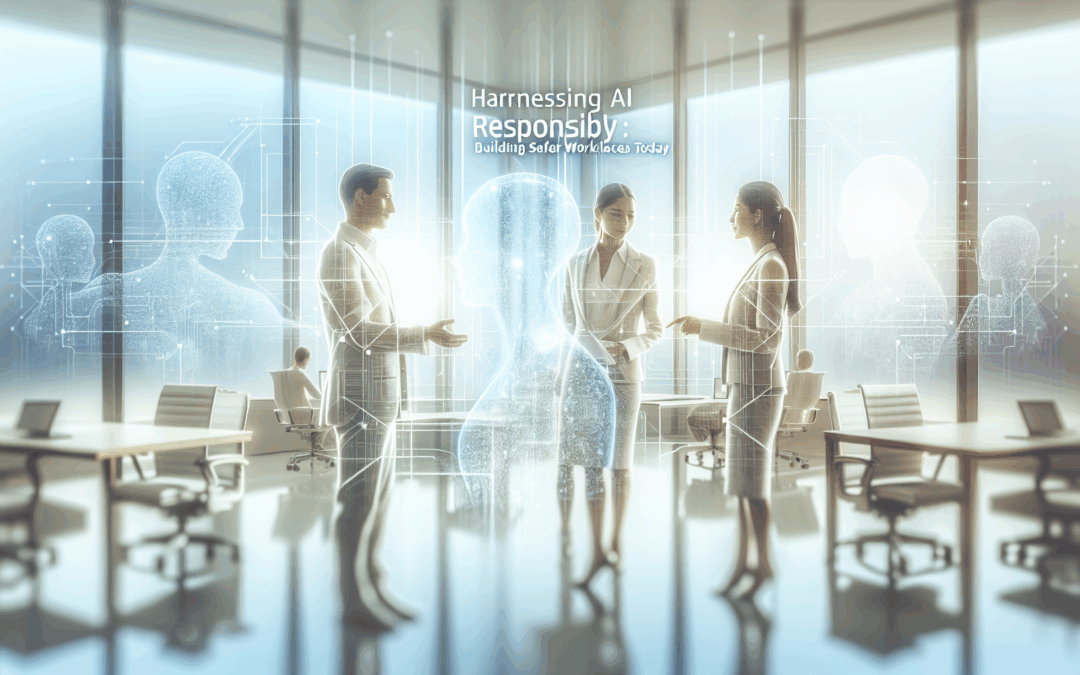Embracing Artificial Intelligence for a Safer Workplace
The rapid integration of Artificial Intelligence (AI) into various industries is no longer a futuristic scenario—it is happening today. While the promise of AI productivity and automation offers exciting opportunities for growth and efficiency, it equally demands careful attention to its safety and ethical use in the workplace. Organisations must navigate this balance by investing in AI training and adopting the responsible use of AI to protect employees while enhancing output.
Understanding the Importance of AI Safety
Artificial Intelligence systems, when implemented without proper oversight, can lead to unintended consequences that affect worker safety, data security, and operational integrity. For example, AI-powered machinery must be programmed and monitored meticulously to prevent accidents or malfunctions. Moreover, AI-driven decision-making processes need transparency and human oversight to avoid biases or decisions that could harm individuals in the workforce.
AI safety is not merely about preventing errors; it’s about fostering trust among employees and stakeholders that these advanced technologies will not jeopardise job security or personal well-being. As the saying goes, “Technology should work for people, not against them.” This philosophy is especially vital when AI increasingly collaborates alongside humans on factory floors, offices, and other workspaces.
Workforce Development: Equipping Employees for the AI Era
One of the most effective strategies to ensure AI safety in the workplace is comprehensive AI training. This training goes beyond teaching staff how to operate AI tools. It emphasises understanding the capabilities, limitations, and ethical considerations of AI systems. When workers comprehend the AI’s function and are alert to potential risks, they become proactive participants in maintaining a safe work environment.
Workforce development programmes focusing on AI safety also embrace continuous learning. The AI landscape evolves rapidly, and so must the skills of your team. Companies adopting programmes like WorkSmart AI are leading the way by integrating safety modules and hands-on workshops into routine employee development schedules. These initiatives empower employees to recognise early warning signs of AI failures or misuse and respond effectively.
Championing the Responsible Use of AI
Responsible use of AI is a foundational principle that guides organisations in deploying Artificial Intelligence without compromising ethical standards or workplace safety. It entails implementing strict guidelines on data privacy, fairness, transparency, and accountability.
A core tenet here involves involving humans in the decision loop. Automated systems should augment rather than replace human judgement, especially where sensitive decisions are involved—think recruitment, performance evaluations, or health and safety protocols. Companies embracing these principles can avoid reinforcing systemic biases or enabling unsafe shortcuts.
Furthermore, responsible AI usage means continuous auditing and monitoring of AI applications. It includes verifying whether AI models operate within their intended domains and do not drift into erratic or harmful behaviours. This vigilance is crucial for maintaining a safe workplace where AI assists rather than hinders human workers.
Practical Steps to Enhance AI Safety
So, how do organisations translate these high-level concepts into actionable practices?
1. **Develop Clear AI Safety Policies:** Define and document what constitutes safe AI use within your organisation. Ensure these policies are aligned with legal standards and industry best practices.
2. **Invest in AI Training Programmes:** Implement structured AI training that covers both technical know-how and ethical awareness. WorkSmart AI platforms often bundle these features into their solutions for streamlined adoption.
3. **Establish Cross-Functional Oversight Teams:** Bring together experts from IT, HR, legal, and operations to monitor AI applications continuously. This multidisciplinary approach ensures all perspectives are considered.
4. **Conduct Regular Risk Assessments:** Evaluate AI tools periodically for vulnerabilities or operational risks. Address any findings promptly to prevent incidents.
5. **Promote a Culture of Open Communication:** Encourage employees to report AI-related concerns without fear of reprisal. An open dialogue fosters shared responsibility in AI safety.
The Impact of AI Productivity on Workplace Safety
When implemented thoughtfully, AI can significantly enhance workplace safety. AI systems can process huge datasets quickly to predict hazards and identify unsafe behaviours or conditions before accidents occur. In environments like manufacturing or construction, AI-powered sensors and cameras monitor real-time activity, triggering alerts or automatic shutdowns in dangerous situations.
Moreover, AI productivity gains allow companies to reduce the reliance on human workers for high-risk tasks, reallocating staff to safer, supervisory roles. This shift not only protects employees but also optimises overall operational efficiency.
However, the safety dividends of AI productivity are only realised if AI is designed and deployed with care. A malfunctioning or poorly trained AI can create confusion or hidden risks, negating any potential benefits. This reinforces the argument for embedding AI safety and responsibility at every stage—from initial training to day-to-day use.
Looking Ahead: Building an AI-Safe Future at Work
The convergence of AI technology with human capabilities is reshaping workplaces across the UK and beyond. The challenge and opportunity lie in harnessing AI for productivity while ensuring safety and ethical integrity.
Companies that prioritise workforce development through comprehensive AI training, champion the responsible use of AI, and embed robust safety protocols will lead the way. Platforms like WorkSmart AI provide practical tools and structured programmes to support these endeavours.
In the words of Satya Nadella, CEO of Microsoft, “AI is the defining technology of our time, and how we shape it — especially to empower people — will make all the difference.” Applying this mindset to AI safety in the workplace isn’t just smart; it’s imperative for a thriving, sustainable future of work.
Get started today with Responsible use of AI license training.

